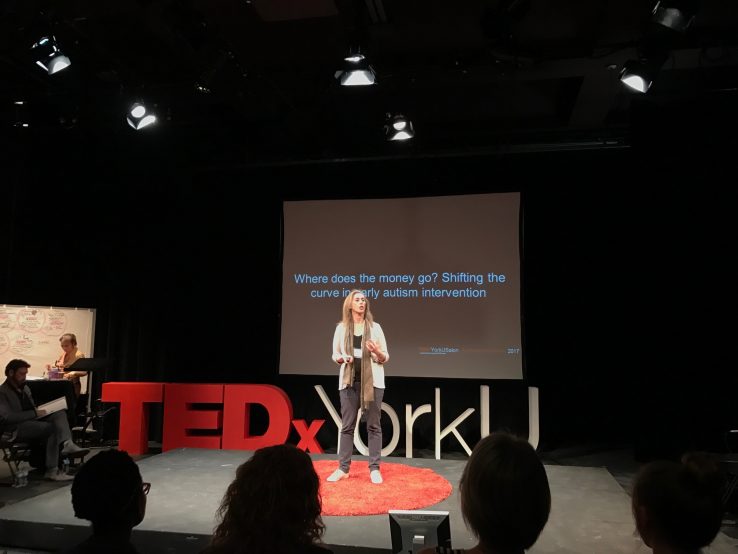The challenging gaps in evidence and the difficulties measuring outcomes in children were just some of the reasons Wendy Ungar, a professor in health economics at IHPME, was drawn to evaluating child health and in particular early autism intervention.
“There are maybe a handful of child health economists in the world,” said Ungar, who is also a Senior Scientist at the Hospital for Sick Children, “and there is no one really doing this type of work on a large scale.”

In April of this year, Ungar participated in a TedX Salon at York University on behalf of Childbright a research network that aims to improve life outcomes for children with brain-based developmental disabilities. During the researcher lightning rounds Ungar presented a lifetime scale model showing the costs of early intervention over the course of a child’s lifetime.
“The cost to society without intervention is around $1 million over the individual’s lifetime, with the majority of the costs arising during the many decades of adult life,” said Ungar. By investing in early intervention in children at the pre-school age, the cost to society can decrease significantly as the more severely affected children are put on a path toward greater independence and eventually workplace productivity.
Early intervention can be highly intensive depending on the needs of the child, and may involve speech and behavior therapy, special education, and other forms of social teaching that help the child develop more skills and independence.
However, with early intervention costing upwards of $70,000 annually per child, it becomes difficult to convince policy-makers that this is the right economic course of action to make with regards to autism treatment. “One of the challenges with this particular type of intervention, is that the costs are very heavy in the early years, but the real benefits accrue much later in the child’s life.” said Ungar.
So how do you get policy makers to listen? Ungar engages with government policy makers and Directors of Autism Services for a number of provinces in the course of her research. “I believe as a scientist you need to include decision makers in all phases of research in order for thems to utilize research evidence in policy discussions,” said Ungar.
Furthermore, researchers are not assessing these programs in isolation. There is a growing public interest in autism treatment and an increasing population of highly engaged parents who are eager to hear about the kinds of evidence that might improve care or treatment for their children throughout their lives.
Recently, Ontario re-designed its autism programs in order to reduce wait times by centralizing the assessment centres by region. Previously, if a child under the age of 2 presented with symptoms, there would be an average 6 month wait time for the appropriate diagnostic testing and assessment, followed by an additional 6 months to 2 year wait time for treatment where the window for early intervention is most critical.
“There is also a strong interest in interventions that involve parents,” said Ungar. In British Columbia a study is being conducted to determine what this type of intervention might look like, and the investment and training that would be required for parents to be involved. “This approach could solve a lot of problems and potentially be a cost-effective strategy to ensure early intervention,” said Ungar.
The ultimate win-win situation would be to see more people with brain and communication disorders gainfully employed, a goal that Ungar is hopeful will eventually become a reality as provinces look to build on a collaborative policy for autism programs nation-wide.
Related News

Sign up for IHPME Connect.
Keep up to date with IHPME’s News & Research, Events & Program, Recognition, e-newsletter.
Subscribe to Connect Newsletter
Get in Contact
Communications
Marielle Boutin
Email Address: ihpme.communications@utoronto.ca





